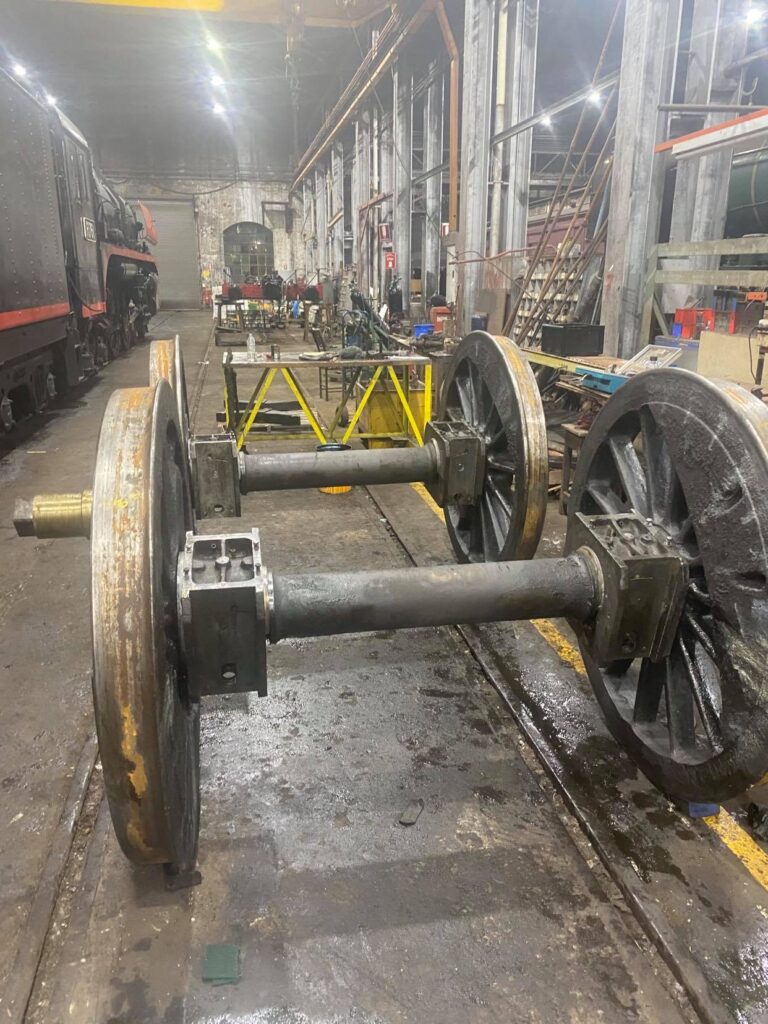Keep K163 Going
Fitting Wool Pads & Final Assembly
With restrictions easing in Melbourne, works have been able to resume on a limited basis. With
the completion of the process of scraping in bearings and the axleboxes being fitted to frame
horns with wedges in position, the team could then begin to task of fitting wool pads to axlebox
cellars, and subsequently axlebox assemblies onto the journals in preparation for lifting the
engine back onto wheelsets.
Earlier in the project, several of the oil cellars were identified as being cracked. Although the cellar is a non-structural component, the cracks were resulting in oil leaking out onto the ground and not being retained for lubrication. Therefore these cracks were repaired using brazing techniques. Once the cellars were repaired, axlebox cellars were all thoroughly cleaned, new lateral face lubricating felts were fitted by dedicate team members Owen and Maryanne, (thanks for your efforts!) New engineering ‘A’ grade felt was acquired from J.J.Davies & Sons in Huntingdale, Victoria for this purpose. The felts have a wire covered trimming which extends into the base of the cellar, these felts use capillary action to help lubricate the wheel hub face and axlebox lateral face.
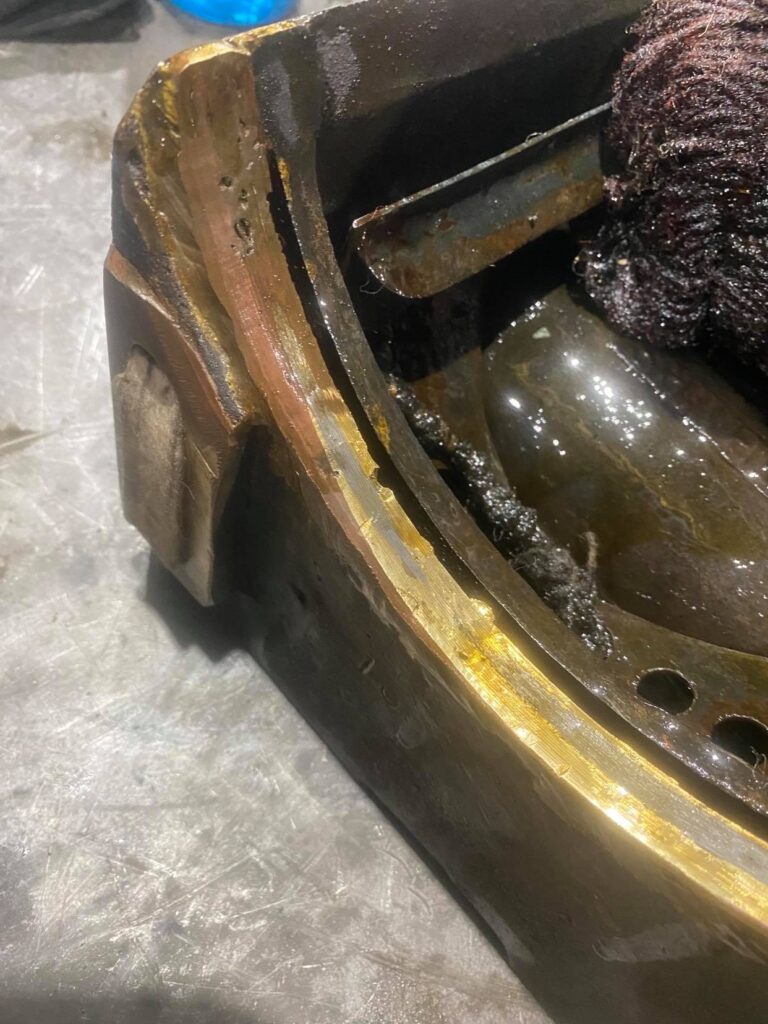
Following the fitting of the new felts, the axlebox cellar wool pad holder frames were cleaned and fitted, one of the frames was found to be broken and required replacement. A spare was sourced from Steamrail Victoria. A selection of wool pads had been preselected, cleaned and soaked in oil bath for some weeks prior before being fitted to the axlebox cellars.
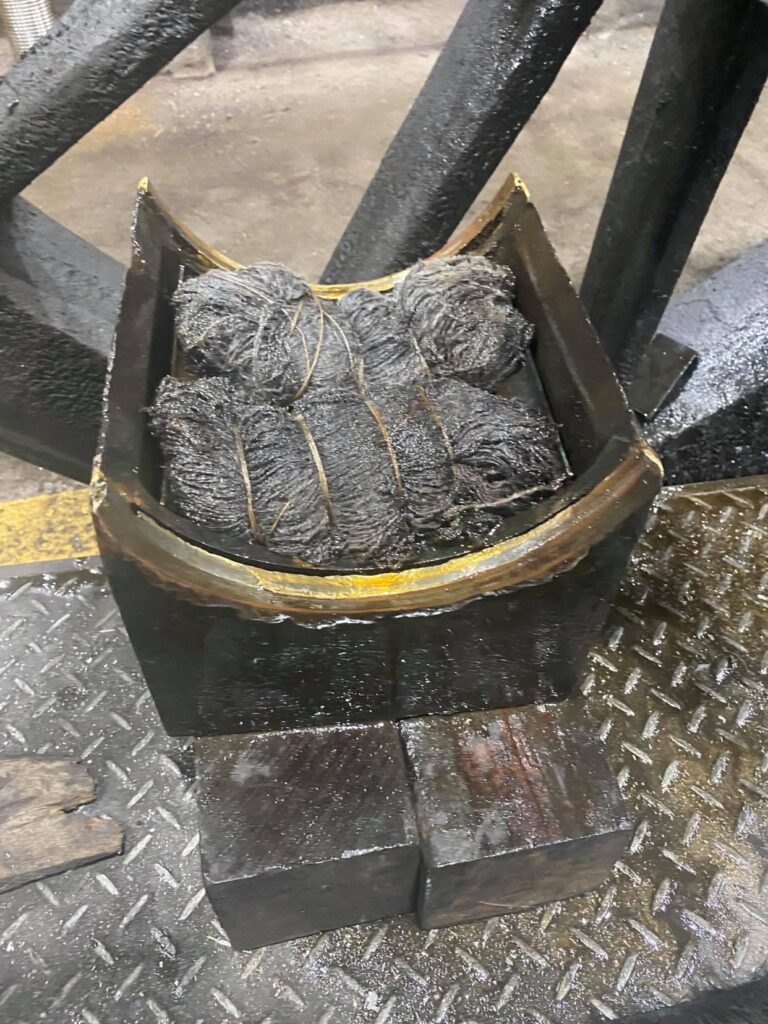
Using a crane, the axleboxes were lifted onto the journals, whilst a hydraulic jack trolley and some carefully arranged blocks and packers lifted the cellars into position, the correct position was achieved when two interference fit pins can be tapped into hold the cellar to the axlebox. The cellars had to be lifted on/off many times until the correct pressure of the wool pads was achieved. Adjustment of the pressure was completed by altering or changing wool pads of different sizes and/or manually removing some of the wool from individual pads, this process was undertaken until correct fitment was achieved.
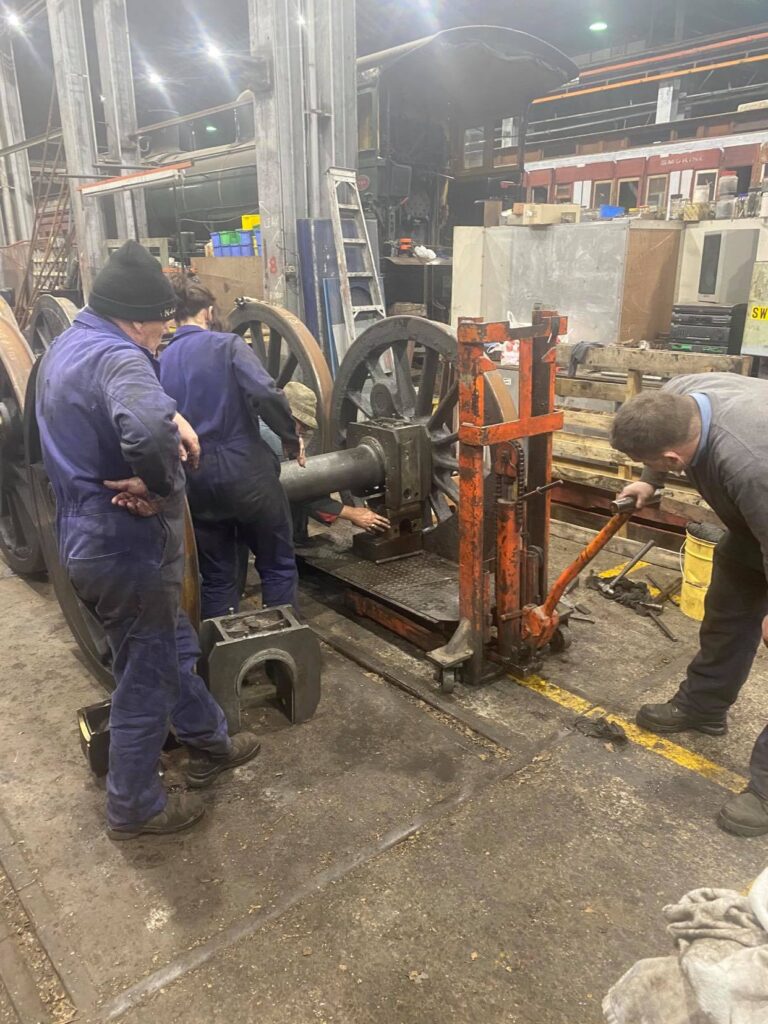
With the wool pads fitted and cellar secured, the remaining step in preparation for the lift was to hang the spring bracket, horn keep and driving wheel springs which are all under hung from the axlebox.
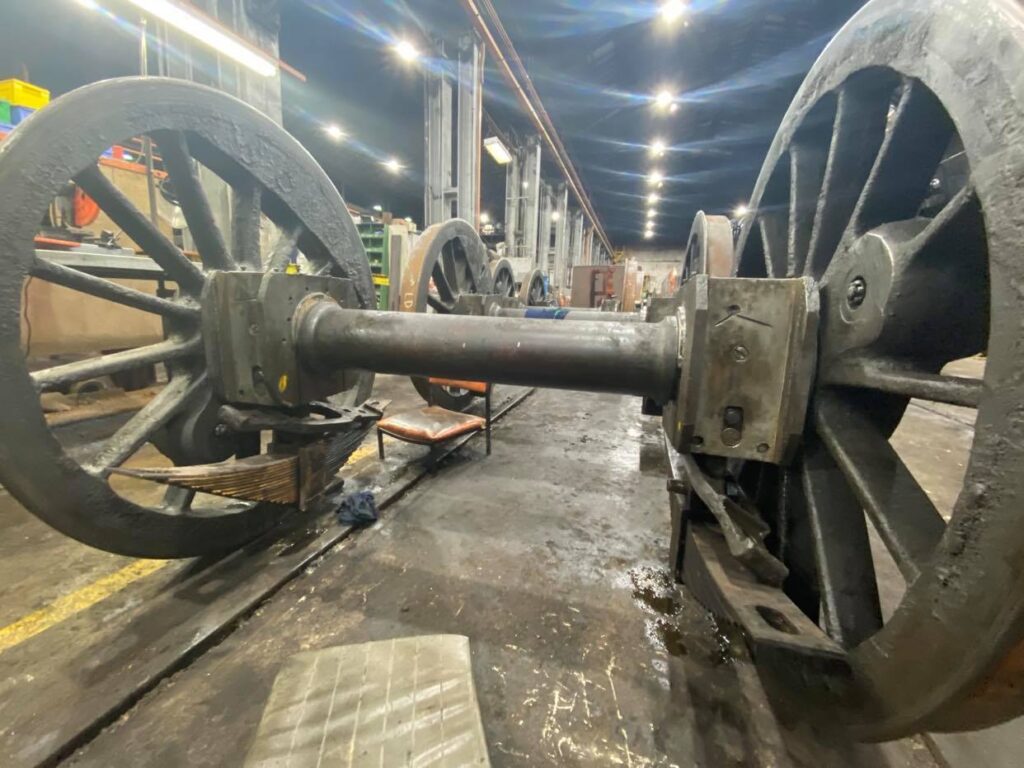
With the above steps complete the wheelsets were then ready to receive the engine. Next update will show the exciting process of lifting the engine back onto the wheelsets.
As always the team really appreciates your generous support towards this project.
